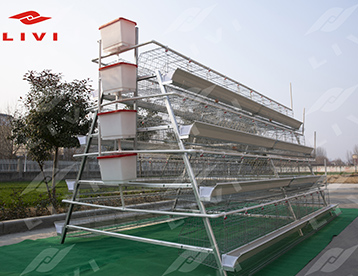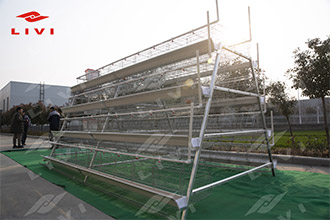Are you thinking about getting into poultry farming and considering battery cage system? Understanding the cost implications is critical. At the heart of the issue is the cost associated with purchasing a battery cage. Designed specifically for broilers and layers, these cage systems are a significant upfront investment.
Poultry farming is an attractive undertaking with the promise of sustainable income and high-quality protein production. However, before starting poultry farming, one must understand the financial complexities involved. The key to a custom cage system for broilers and layers is the initial investment in the cage. Cage cage systems offer a structured and efficient approach to poultry farming, but what exactly are the costs involved in implementing one?

1. How many chickens can fit in a battery cage?
Cage cage systems have evolved into an integral part of modern poultry farming, maximizing space efficiency. It is crucial to explore the capacity of battery cage system. Each battery cage can accommodate a large number of chickens, ranging from 90 to 244 groups depending on the cage type.
A-type layer chicken cages are specially designed for laying hens, usually raising 90/120/1280/160 chickens in a group. At the same time, H-type chicken cages are a popular choice for laying hens and broilers, with configurations of 144/180 sets and 102/136 sets respectively. Customizability is a key feature, allowing farmers to tailor the battery cage system to the size of the chicken house.
Battery cage systems emerged as a strategic solution to efficiently house large numbers of chickens. This is to create an environment that promotes healthy and productive poultry. Whether it’s a versatile A-frame cage or the popular H-frame configuration, the adaptability of these cages ensures that every inch of the chicken coop is used efficiently.
2. Poultry farming using battery cage systems for broiler and layer
Overall economics of poultry farming using cage cage systems. In addition to the initial investment in battery cage system, there are additional costs to consider – feed, utilities, labor and ongoing maintenance. A detailed breakdown of these costs can help potential poultry farmers gain a comprehensive understanding of the financial commitment involved.

It’s not just a matter of buy battery cage for layer and broiler. It’s about managing a sustainable and profitable poultry farm. The importance of ongoing cost budgeting and implementing effective practices to ensure the long-term success of the business.
In addition, using battery chicken cages has efficient space utilization and productivity improvements in the long run, and ultimately improves return on investment. The economics of cage farming extend beyond the initial setup, and poultry farmers can see a smart blueprint.
3. Why use battery-type chicken cages?
There are enough compelling reasons to adopt battery cage system for broiler and layer. These cages provide a sustainable and efficient solution for poultry farming, ensuring optimal space utilization, ease of management and increased productivity.
In the competitive landscape of poultry breeding, taking advantage of battery chicken cages has become a strategic choice for farmers and customers. The benefits go beyond cost considerations; they extend to creating a sustainable and prosperous poultry farming business that meets market demand.
Therefore, for those considering the exciting journey of poultry farming, understanding the costs and benefits of battery cage systems is key to success. Make an informed decision, optimize your space, and start a poultry farming business that is not only financially viable but sustainable in the long run.
